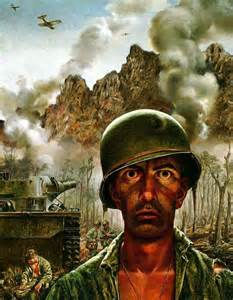"The Rise of The Nicolaitans"
- William R. Kimball
- Mar 24, 2021
- 2 min read
Updated: Apr 2, 2021

It does appear from a contextual overview of church history and the New Testament record that the seeds of the Nicolaitan heresy that is strongly condemned in Revelation’s 2:6 were planted during the final years of the 1st century church. The initial purity and simplicity of the church as evidenced in the seminal passage Acts 2:42 and alluded to elsewhere in the New Testament record was threatened early on by the lingering taint of Jewish legalism which pitted the Judiazers against Paul's efforts to establish the gospel of grace among the Gentiles ‑ even by that deeply entrenched mind set affecting the apostles at Jerusalem. Galatians chapter 1 & 2 underscores this clash when Paul stood alone against the legalistic lapse of Barnabas, Peter and their entourage from Jerusalem. (Galatians 2:11‑21)
The rise of the "bishops" as super "elders" built upon the old Testament pattern of a select priesthood which stood in supremacy over others. This subtle influence continued into the 4th century when Constantine's "Edict of Milan" 312 A.D. officially designated Christianity as the state religion and what was left of the early church rapidly accelerated down the path of apostasy and spiritual corruption. What had begun as a simple house church received it's final death blow in A.D. 380 under the stimulus of Bishops Theodosius and Gratian with the recognition of only one, authorized state sanctioned church which was sanctioned and legalized making all other forms of Christian gatherings and expressions of Christian assembly a criminal activity. It was, for all intents and purposes, the final “nail in the coffin" for what had begun in purity as the simple house church.
The end result was the official rise of a supreme bishop in Rome who ruled over the entire church. With the rise of the Roman Catholic church came the amalgamation of religious rituals and liturgies borrowed in part from the Levitical Priesthood and temple liturgies, the Jewish synagogue system and the incorporation of pagan temple practices. Thus, began and a long succession of Popes and a growing list of religious liturgies, rituals and superstitions culminating in the Protestant Reformation. The reformers, to the man, were unanimous in identifying the Pope as the Antichrist "sitting in the temple of God" (the church) and calling himself God or "Christ's supreme vicar" over the church." (II Thessalonians 2:1‑12) With The rise of Popery and the power Roman Catholic hierarchy the Nicolaitan heresy would reach its greatest extent.
Today the spirit of the Nicolaitans still thrives across the board in churches and movements that maintain a heavy-handed, authoritarian control over God’s people. It permeates those who demand absolutely obedience and unquestioning loyalty. It hides beneath the pseudo-godlike status of pastors who feel they have the inside track with God and possess a special anointing which the average believer doesn't have and they will breach no dissent, questions or disagreement with what they preach or about church policy. They will not tolerate anyone crossing them for it's their way or the highway.
Whether it manifests itself in dictatorial authority, rigid legalism, religious censorship heavy-handed discipleship or other forms of spiritual abuse and control the tendency to “lord over God’s sheep” still continues in many churches today through pastors, staff and church boards who are little more than church control freaks.




Comments